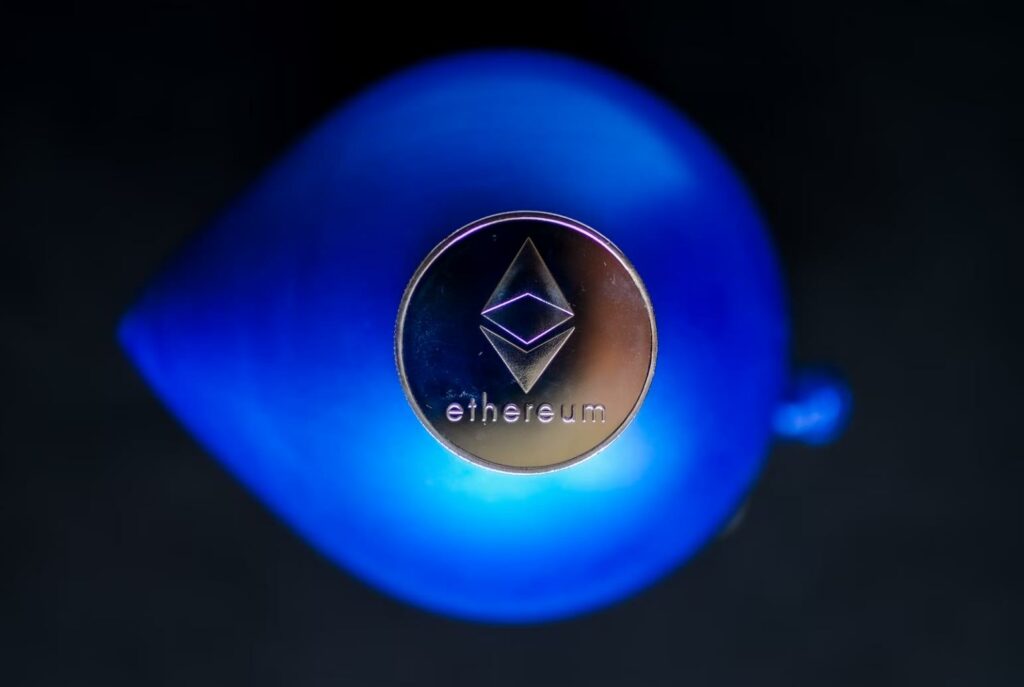According to a blog post from the Ethereum Foundation’s protocol support team, the client team agreed to activate the Shapella upgrade on mainnet after a smooth transition to the Goerli testnet.
It's happening 🎊
— timbeiko.eth ☀️ (@TimBeiko) March 28, 2023
Shapella is scheduled on mainnet for epoch 194048, scheduled for 22:27:35 UTC on Apr. 12, 2023 📆
Client releases compatible with the upgrade are listed in the announcement below 👇https://t.co/I0hSv9lnjz
The Shapella upgrade will be expected on April 12, 2023 at 22:27:35 UTC. The upgrade will enable validators to withdraw ETH from the beacon chain and bring new functionality to the execution and consensus layers.
After the upgrade is complete, validators who run validators independently can choose between partial withdrawals and full withdrawals. Partial withdrawal refers to the withdrawal of profits generated by each validator who staked 32 ETH. This part of the reward can be withdrawn immediately, and the validator will continue to add blocks in the beacon chain.
The time required to withdraw these rewards will depend on the number of partial withdrawal requests made after the Shanghai upgrade. Each one slot can accept 16 partial withdrawal requests (occurring every 12 seconds), the queue can take several hours. At the same time, Ethereum ETH 0.50% has designed the “automatic scanning” function, the network will scan regularly, and automatically extract the profits of nodes with a balance exceeding 32ETH to the user’s designated address according to the scanning progress.
Full withdrawal, on the other hand, refers to withdrawing all balances including 32 ETH from the blockchain. This means validators will stop participating in the block validation process. This takes a long time as validators need to send messages to the blockchain to add them to the withdrawal queue. Especially after the upgrade in Shanghai is completed, there may be a wave of withdrawal peaks. According to the current network scale, Ethereum can process withdrawal requests of up to 5.7w nodes per day, which is equivalent to the maximum number of nodes allowed to enter the staking consensus every day.
If the pledger uses a pledge service provider or a decentralized pledge pool, withdrawing the pledged ETH needs to be further determined by the service provider or the pledge agreement when to withdraw the pledge.
For example, Coinbase said in March that it would process withdrawal requests 24 hours after the Shapella upgrade was complete. All requests to withdraw pledges are processed on-chain, and once the pledged ETH is released through the Ethereum protocol, Coinbase will immediately release the principal and rewards.
Lido stated that users who hold Steth will need to wait until the Lido protocol is upgraded in mid-May before they can withdraw the pledged ETH, because the protocol requires proper security checks. Rocketpool stated that the protocol needs to be upgraded after the “Atlas” on April 18 to withdraw ETH pledges.
Ethereum Selling Pressure Analysis After Upgrade
Since most users choose to participate in staking through LSD on decentralized or centralized exchanges, the ETH of these pledgers has actually always been liquid, so there is not much incentive to sell. Decentralized LSD platforms such as Lido currently account for 33.2% of total ETH pledges. In addition, about 27.1% staked through centralized exchanges such as Coinbase, Binance, and Kraken. Therefore, approximately 60.3% of ETH is staked with LSD.
The rest is the ETH directly deposited into the pledge contract by setting up nodes or third-party service providers, accounting for about 40% of the total pledge amount. This part of ETH has been locked before, so it is more likely to be sold after unlocking.
According to the analysis of the data website Nansen, about 59% (3.62 million to 4 million ETHs) of this temporarily illiquid ETH are in a profitable state, and they may make partial or full withdrawals after unlocking . Of course, some of the pledgers will choose to continue to pledge. Nansen estimates that the selling pressure of ETH after the upgrade is between 1.2 million and 3 million ETH. However, due to the daily withdrawal limit, this process will proceed slowly.
According to Nansen’s report, there will be three stages of ETH selling pressure after the upgrade.
- The first stage is within 27 hours after the upgrade. The selling pressure comes from partial withdrawals (that is, the accumulated interest over the years), which is about 84,000 to 125,000 ETH per day.
- The second stage has the highest potential selling pressure, which comes from partial withdrawal (interest) and full withdrawal (complete 32ETH), with 136,000 ETH and 173,000 ETH per day respectively. This phase lasts from the third day to the fourth day after the upgrade.
- The third stage of selling pressure mainly comes from all withdrawals, which will last for 19 to 52 days, with a selling pressure of about 48,000-53,000 ETH per day.
Since the current 30-day average exchange inflow is 313,533 ETH, this means that the potential exchange inflow after the upgrade will be between 15% and 55% of this average, which may suppress ETH prices until 3-8 weeks later. The pressure subsides.
Another analysis by Arcana Research estimates that approximately 1.3 million ETH will be sold within 10 days of the upgrade due to partial and full withdrawals. ETH selling pressure will reach its peak in the first three days after the upgrade, with a daily selling pressure of about $527 million (calculated at an ETH price of $1,800), accounting for 6.4% of the current daily trading volume.
From another perspective, the Shapella upgrade will free ETH pledges from the risk of uncertainty and pave the way for an increase in the ETH pledge rate, which will to some extent hedge against potential selling pressure. After the upgrade, the stake percentage of ETH may increase by 2-4 times. At present, the pledge rate of ETH is only about 15%, while the pledge rate of other PoS cryptocurrencies is basically 50-70%, or even higher.
The low ETH pledge rate is due to the uncertain lock-up period, which presents unknown risks for many investors. However, the upgrade will enable flexible withdrawal of ETH staking, which will encourage more ETH holders to participate in staking.
Recent Spot Market Demand
According to the data from the Santiment analysis website, the supply of ETH on the trading platform has dropped to the lowest point since 2015, accounting for only 10.31% of the current circulation. In other words, more ETH is held by investors themselves , which reflects that the currency holders are confident in the long-term performance of ETH.
Recent data shows that market demand for ETH is growing, especially from retail investors. There are currently over 23.3 million addresses holding at least 0.01 ETH, an eight-month high.
In addition to the demand from retail investors, the demand for ETH from giant whales and institutions is also increasing. Addresses with more than 1,000 ETH and 10,000 ETH addresses have also increased recently.
Muye Sheng, co-founder of the non-custodial staking mining pool Ebunker, said that the ETH network currently has 560,000 nodes. Before the upgrade in Shanghai, they were still mainly concentrated in the two solutions of LSD and centralized exchanges. However, after the Shanghai upgrade is completed, especially after the early withdrawal peak (about 1-2 months), Solo Staking and non-custodial Staking can also quickly complete the user’s withdrawal needs. Therefore, for users, the private key is still Gradually shifting to self-hosting is the endgame of Staking.
Derivatives Market Signals
With the upgrade now less than nearly a week away, traders may try to preempt potential selling pressure by opening short positions in the futures market. But so far, the futures market has not shown a significant increase in the trading volume of short orders or funding rates.
Typically, in a healthy market, the contango over two months should be between 5% and 10% to cover the associated costs and risks. When futures trade at a discount relative to traditional spot markets, it signals a lack of confidence among traders and is considered a bearish indicator.
The chart above shows the annualized premium of ETH futures over a nearly two-month period, and traders using futures contract derivatives became slightly bullish on March 29 as the metric rose to 4%. Despite staying below the 5% neutral threshold, the contango hit its highest level in 4 weeks.
The 25% delta skew is a sign to look at when market makers and arbitrage markets overcharge rates for price upside or downside protection. In a bear market, options investors bet more on falling prices, causing the skewness indicator to rise above 8%. On the other hand, in a bullish market trend, the skew indicator will usually run below -8%.
Since March 22, ETH’s 25% Delta Skew indicator has been neutral, indicating equal probability of price upside and downside. However, given the recent increase in regulatory pressure on exchanges, the fact that the derivatives market is able to maintain this state in a bearish environment also reflects a certain degree of market confidence.






